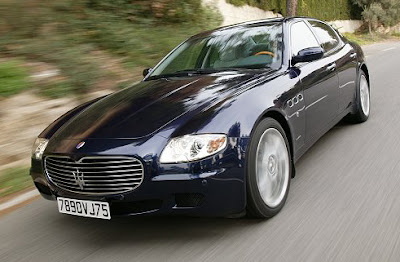Hyundai's plans for Geneva
 Korean automaker to unveil new i30 and a crossover-SUV concept
Korean automaker to unveil new i30 and a crossover-SUV conceptHyundai has revealed two new vehicles will be making their debuts in Geneva next week. The Korean automaker has released details of its new i30 C-segment vehicle and a crossover-SUV concept made from plastic composite material.
Initially shown as the Arnejs concept car at the Paris motor show last fall, the i30 has been specifically designed for the European C-segment. Sound familiar? Well it should, the other Korean manufacturer with the three letter name is also singing the same song. In fact, the i30 was jointly-developed with Kia and shares the same platform as the recently launched Cee’d.

With a choice of three petrol and three diesel engines, the Hyundai will likely offer the same engine choices as the Kia, with 1.4-litre and 1.6-litre petrol units and a 1.6 litre diesel. We suspect there may be a few 2-litre petrol and diesel units joining the mix. The powerplants will be mated to either a manual or an automatic gearbox.
Hyundai will be ditching its previous nomenclature in favour of a new alpha numeric naming strategy claimed to “display a clearer technology-orientation”. The i30 will go on sale across Europe in summer 2007, initially as a 5-door hatchback and later as an estate car.
The crossover-SUV concept, code-named HED 4, is a joint project with GE Plastic. The concept vehicle is said to have “endowed designers with greater expressive freedom to create complex three-dimensional shapes that could not have been achieved with conventional production methods”.
 Composite technology was used extensively in the new CUV. It employs a wrap-around Lexan windscreen and polycarbonate glazing materials to save of up to 50 per cent weight over conventional glass, while simultaneously allowing greater flexibility in the shaping process. The glazing features an Exatec technology which deposits a thin protective layer of glass on the Lexan for increased resistance to scratches and protection from the elements.
Composite technology was used extensively in the new CUV. It employs a wrap-around Lexan windscreen and polycarbonate glazing materials to save of up to 50 per cent weight over conventional glass, while simultaneously allowing greater flexibility in the shaping process. The glazing features an Exatec technology which deposits a thin protective layer of glass on the Lexan for increased resistance to scratches and protection from the elements.More information on the cars will surely become available next week, and we’ll be sure to share it with you.
































